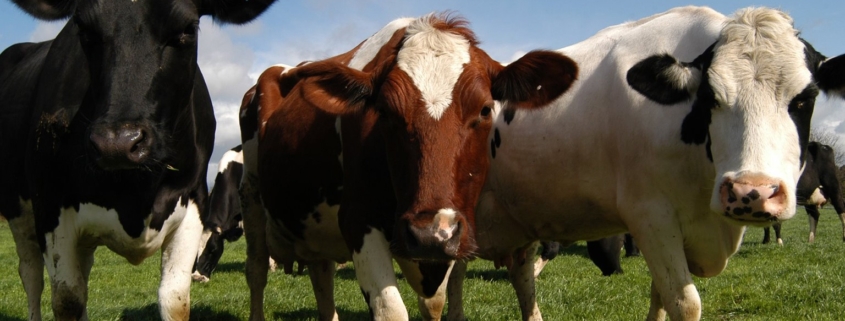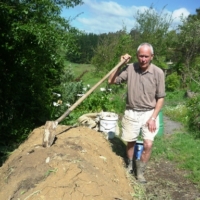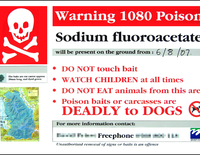A Mothers’ Milk + Good Practices for Raising Calves
Harvests Magazine Article – Summer 2015
Bucking an industry accustomed to quiet cruelty, Canterbury raw milk dairy farmer Laura Beck shares her quest toward kinder calf-raising.
This article has been republished from the Summer 2015 of Harvests Magazine.
I have a lot of time to think on the farm. As I squat behind the cows every day to wash their teats before milking,
I often receive this immense sense of calm, contentment and joy. And it got me thinking: These animals are so much Mother. Many New Zealanders’ lives – and a significant part of our economy – revolve around these beautiful creatures, with their massive udders and their incredible capacity to produce milk. We are fortunate that these big beasts stand quietly for us twice a day as we take this milk from them with absolute ease. Their mother’s milk feeds our children and our adults.
And then I got thinking: How is it that we receive this gift, given so gracefully, but we remove so quickly the reason for giving it? In most dairy farm systems, including organic and sometimes biodynamic, calves are typically taken from their mother within the first 24 hours of life. They are then reared by humans away from the herd. For most milk drinkers, the practice of calf-rearing is an unknown facet of dairy farming; some people are not even aware that to give milk, the cow has to have a calf. I’d like to relate to you my experience of calf-rearing.
Industrial Calves
Removing calves from cows at such a young age seems to be ingrained in the dairy culture of New Zealand; it’s just what you do. There are some understandable reasons for it. It can be a tough financial life making a living from the land. Last I heard, dairy farmers were shouldering $40 billion dollars of debt. Milk is the income for the farm, and the calf would drink a lot of the profit. (Many conventional farmers feed their calves milk powder, a cheaper option than feeding them fresh milk. (Organic and biodynamic farmers only feed fresh milk.) There are also perceived issues around keeping calves on cows: chaos when bringing the cows in to milk, cows withholding milk, stress on the udder. Then there’s the notion that there will be less trauma for the cow and calf if the calf is taken away earlier, before the bond has had time to develop.
A couple of years ago, for four weeks I worked for a large conventional dairy farm, rearing the calves. They were milking around 1,300 cows that season, so every morning I received around 40 newborn calves, along with the other couple of hundred who were days or weeks old. I was busy. Not every calf had learnt how to suckle. Not every calf had had a first drink from its mum, and it’s important that they get colostrum milk within the first four hours of life. If they hadn’t mastered suckling from my bottle in five minutes, then I had to force-feed them two litres of milk by sliding a tube right down their throat. It’s important to get this right; otherwise you risk filling their lungs with milk and drowning them. From there the calves are reared in pens and are then eventually put out onto pasture.
Working there, I also found out about the bobby calf trade and the slinky pile. At birth the calves are instantly divided into those who will be replacement heifers (female calves that will replace cows in the milking herd), and those that are bobby calves (bull calves or rejected heifer calves). Bobby calves are deemed ‘rubbish’ by most farmers. On the farm that I was on, this is how people referred to them, and this is how they were treated by some of the truck drivers. Bobby calves live to about a week old. They have to be around five days old before they can be picked up by the truck. On bobby truck day, they are all fed by 11am before they are picked up for their long journey to the meat works, where they are ideally killed within 24 hours. They are not fed from the time they are picked up.
“Bobby calves are deemed ‘rubbish’ by most farmers.”
Laura Beck
Then there is the slinky pile. These are the calves that die before they get on the bobby truck. This can happen for a number of reasons. I was amazed at how quickly I got used to dragging a cold dead body out of the pens and onto the pile. I never found out why they call the dead calves ‘slinkies,’ but the slinky truck would come round every week or so to pick up the dead bodies. Death happens on a farm, even the best farms, for a variety of reasons. Here the deaths that concerned and saddened me most were the ones where the farmer would not come and put the calf out of its misery; the calf that was delivered to me stone cold, as it had been left alone in the milking yard overnight; and the calf with its skull crushed by a tractor wheel in the paddock.
Learning from biodynamic elders
Shorty Buckingham farmed dairy cows for 35 years; for 30 of these he farmed biodynamically. He ran 200 milking cows on 70 hectares, milking mostly Jersey and some Brown Swiss. For Shorty it was critical to keep the calf on the cow for a minimum of four days. “It’s then that a spiritual bond develops between cow and calf. In this time there is a transfer of knowledge where the calf learns, like any wild animal, a natural understanding of life; they tune their instincts,” he said. Shorty kept all calves on
their mums for those four days. He noticed that the calves became calmer and more aware. He also noticed that those calves that entered the milking herd in two years’ time were calmer and quieter because they already had knowledge of the place.
After taking calves off their mums, Shorty reared them in warm, dry, hygienic conditions, where they were fed cow’s milk for their first three months. “Calves that were kept on milk for 12 weeks always did better and were more resilient, especially if a summer dry hit,” he observed. His management of the milk was very particular. Shorty ensured that calves received warm milk for the first couple of weeks, and any adjustments to diet (e.g. going to once-a-day feeding or weaning) were made gradually. Calves were shifted from pens to the paddock as soon as appropriate for the calf, and they were given the best grass on the farm for their first year. The calves did really well on this system and were highly regarded by stock agents.
The other biodynamic farmer I consulted was Steffen Schneider from Hawthorne Valley Farm in New York. Steffen keeps his replacement heifer calves on their mums for six months. Steffen described the importance of the cow-calf mothering relationship:
…young ruminants’ behavior is very much influenced by their experiences alongside their mothers, especially during the first six to eight weeks of their lives. In a diverse environment…
it is more crucial for the animal to make the right choices about what they eat. Calves being with their mothers helps cultivate this, as they inherit this wisdom from the cows.
Steffen Schneider
Steffen noticed that in calves reared with their mothers,
the calves’ bodies were quite different from other
calves; their limbs were very developed, and they had extraordinary strength and awake senses. There were no health concerns, and he was astonished at how quickly the calves grew in comparison to the farm’s previous system of separating calves from cows.
Steffen notes “positive changes to herd dynamics” due to his calf-rearing system; he reckons this is of special import on a biodynamic farm, as the herd serves as the farm’s heart organ. “It is only now, with the calves being part of
it, that the herd seems to be complete and fully rounded,” he wrote. Steffen has also seen an increase in maternal behavior, as several cows – not only the mothers – keep an active eye on the calves. He has also observed a lot more caretaking behaviour, which he noted happens in the wild as well: “Wolves, coyotes and elephants are well-known
for the packs’ females watching over the young.” Overall, he noted that the whole herd seemed more settled.
Putting it into practice
For my first seasons of calving, I followed a system similar to Shorty’s. It worked well, and the calves were strong and healthy. This season, I thought about replicating Steffen’s system, but I wasn’t set up for it, nor did I think my farm could survive on the reduced milk supply. Instead I decided to trial nurse cows. After two weeks, I separated each calf from its mum and put it onto a cow that I was removing from the milking herd at the end of her six-month milking rotation. I put two calves on one cow, and it worked tremendously well. After a couple of days of persuasion, the cow had accepted and bonded with the calves (and vice versa), allowing them to suckle in the field. By then she could smell her milk on the calves.
Each cow became like a mother to her adopted calves, feeding, licking and protecting them. Though I had enjoyed the relationship I developed with the calves that
I hand-reared in the previous season, it felt more right that I wasn’t the surrogate mother. This time round, the calves get to inhabit a world that is more true to their nature. The calves get to enjoy the loving dynamic between cow and calf and all the learning that comes from that; the cow gets to express her deep mothering instinct; and I get to be farmer rather than friend.
I’m also hoping that this small herd of five cows and ten calves gets to develop a dynamic similar to what Steffen described, and that the calves benefit from having on- demand milk and tutelage from their new mum. It is an absolute joy to watch the calves sprinting round the paddock in between the cows, knowing that they are getting to experience more of what it is to be cattle.
To avoid the bobby calf trade, I am breeding a dual- purpose herd where the animals born are good for both milk and beef. All bull calves are reared for beef and are sold and slaughtered on the farm.
The calves get to enjoy the loving dynamic between cow and calf and all the learning that comes from that; the cow gets to express her deep mothering instinct
Steffen Schneider
It’s clear from my experience, and from talking to a whole range of farmers, that both Shorty and Steffen exhibit best- practice calf-rearing, though through different models. I’m trying to get there with my system of nurse cows. But none of these systems fully escape the trauma of separating calf from cow; it still causes me to consider the nature and meaning of farming animals and what is really right. I hope that carrying this as a living question makes me a better farmer and brings me some resolution
Good Practices For Rearing Calves
Applicable for smallholders to large-scale farmers. These principles can be modified and easily applied to other ruminants such as lambs and kids.
35 years of calf rearing (by Shorty Buckingham) distilled into these few points (by me); hopefully I’ve done it justice. – Laura Beck
Feeding in the pen
- Good to give calf the freshest colostrum for the first week.
- Ideal to feed milk warm for the first two weeks. Thereafter, slowly cool the milk.
- Twice-a-day feeding for the calf’s first 4-5 weeks, feeding a total of 4 litres/day.
- At about 4-5 weeks you can transition to once-a-day feeding. This is best done incrementally, e.g. on day one give 21⁄4 litres per feed, day two give 2 1⁄2 litres per feed… til you get to a 5-litre feed once a day.doesn’t lose heat to environmental conditions.
- You can wean at 12 weeks. Reduce feed by 1⁄2 litre per day.
- Good to have fresh hay available from 2-3 weeks of age
- Post-weaning – it’s important to have a good system.
- For the first 10 months, the calves get the best pasture, even over the milking cows.
- Calves are never put in the same paddock year after year; this is to avoid buildup of bacteria such as E. coli and leptospirosis.
- Calves go into a new clean paddock every 4-5 days
Shelter
- The pen needs to be sheltered well enough that you are comfortable wearing a t-shirt in there. Ventilation is important, but there should be no draughts at calf level.
- Bedding should be clean, topped up regularly and totally renewed between batches of calves.
- Pens should be large enough to allow for 2-3 square metres of space per calf.
- Access to outside is important within 2-3 weeks.
Debudding
- This is done within a week of birth.
- Best done in a sheltered spot so the debudding iron
- NOTE: new laws have passed since this article that requires anaesthetic for debudding
Neutering
- Done within 3-4 weeks with a rubber band. At that age it is easy to do while they are feeding on the ‘calfateria.’
- This way the testicles drop off before calves are weaned. The benefit of this is that you can control the living conditions and ensure a clean environment. You can lose a calf to tetanus from the wound caused when the testicles drop off. It is easier for the calf to pick up tetanus in the field than in a clean, dry shed.



